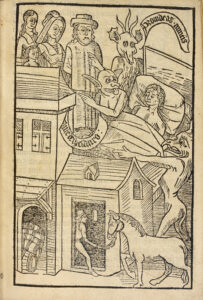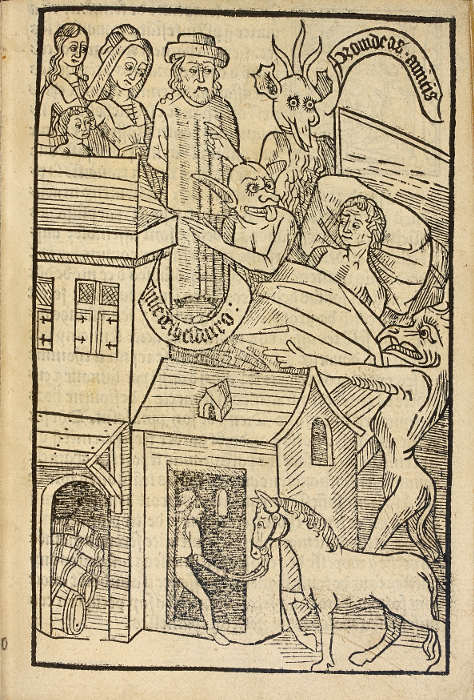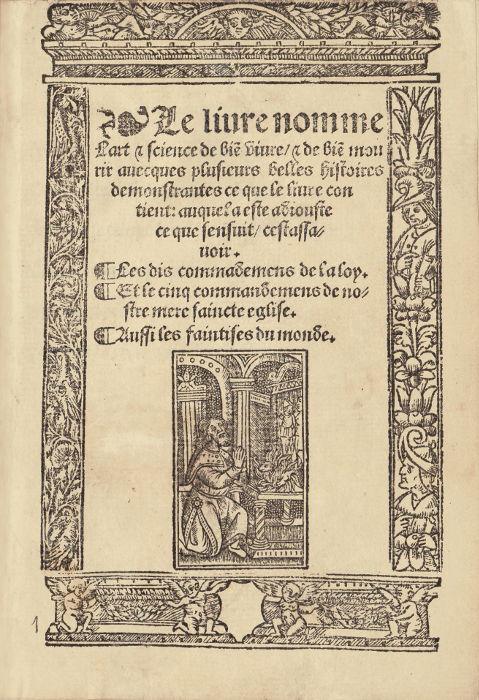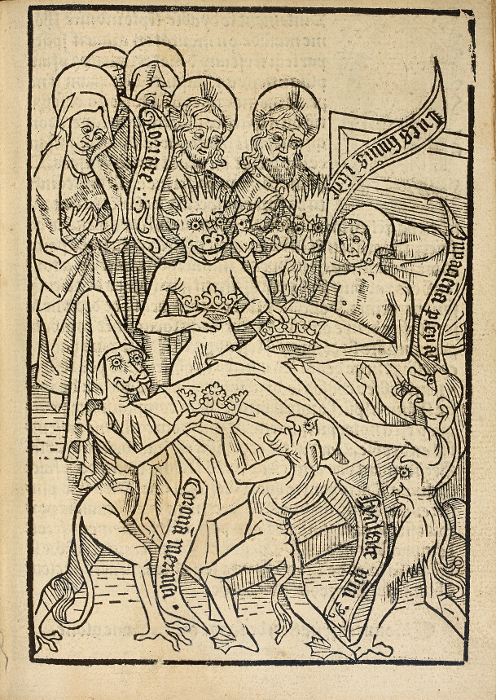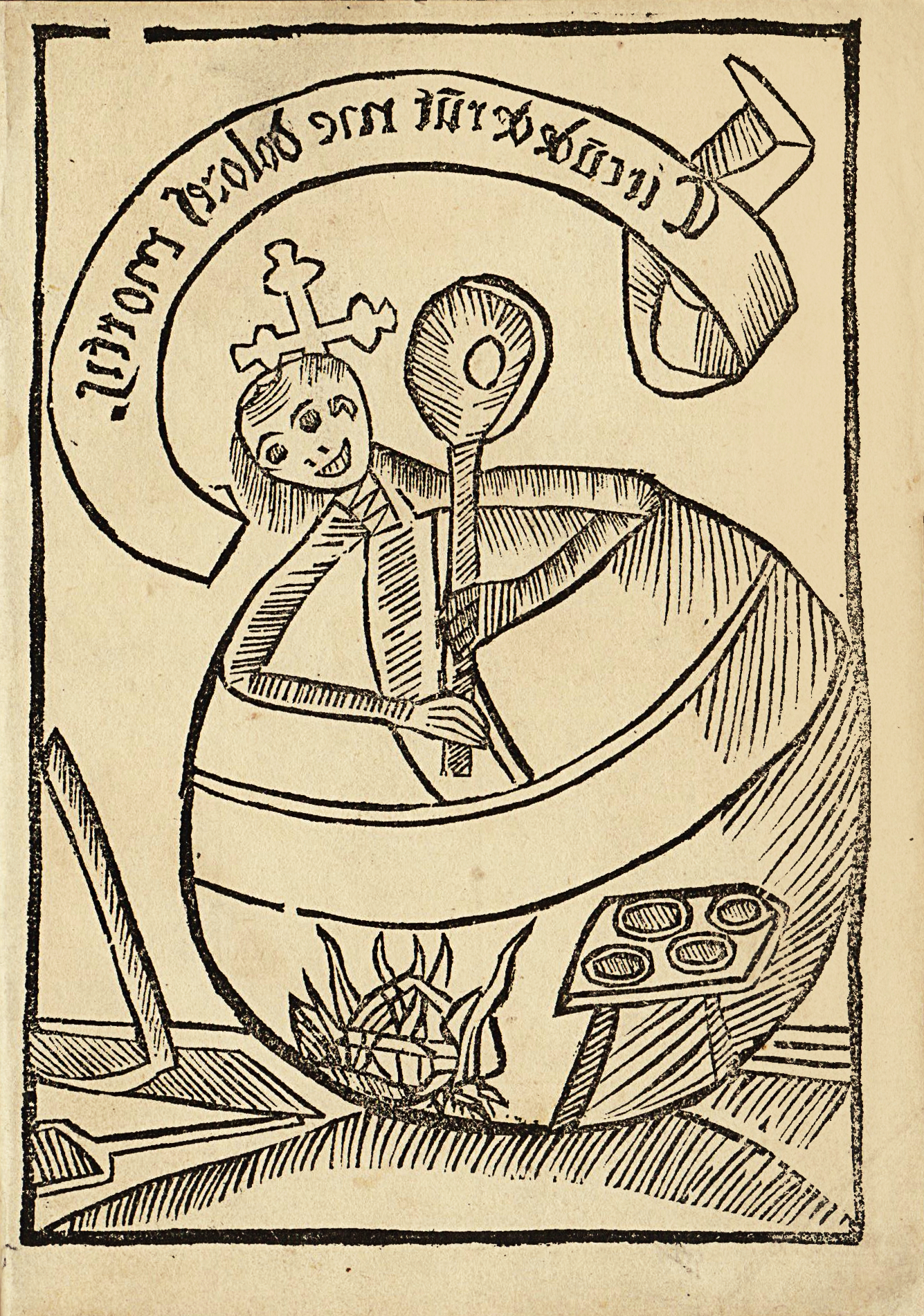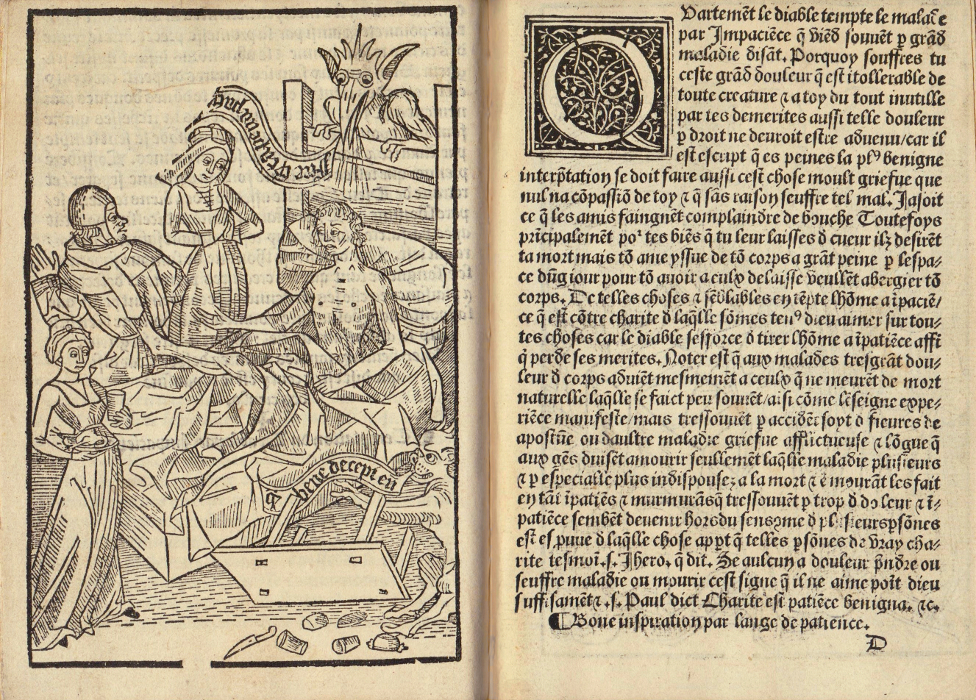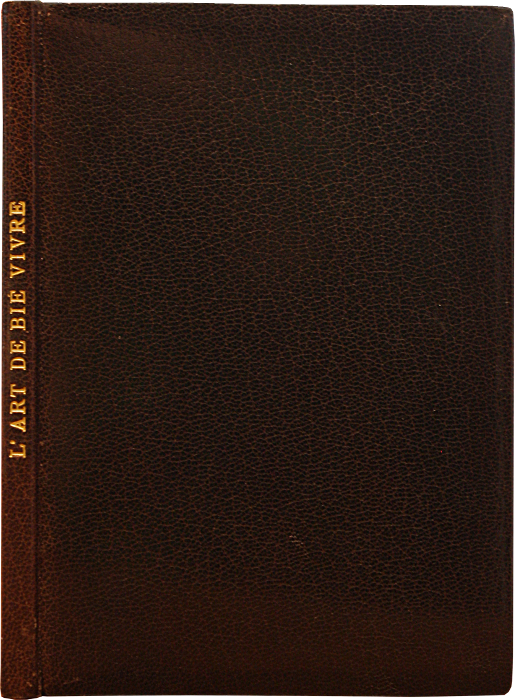Lyon, Jaques Moderne dit Grad Jaques, n.d. [towards 1530].
8vo [162 x 113 mm] of (36) ll. (A-I4) of which 1 engraved title in a frame, long lines in Gothic script, 12 woodcuts in full page, small têr to 3 ll. without loss, small restoration in the lower part of the B3 lêf. Brown morocco, flat spine with gilt title along, inner gilt triple fillet, gilt edges. Gruel.
Rare edition of the Ars Moriendi “The Art of Dying” illustrated with woodcuts, small book of devotion of which we ignore the author and the date of composition, and of which there was several translations. Dutuit, Livres xylographiques, I, p.62; Graesse, Trésor de Livres rares, 47; Brunet, I, 512; Baudrier, XI, 516-517 and 512; Pogue, Jacques Moderne, n°67. Guillaume Tardif, Charles VIII’s rêder, was, according to Emile Male, the author of this free translation made from text of the ancient woodcut editions, in which the concise and dark Latin is “translated, explained, developed by a true writer who spêks a solemn language and an alrêdy classical French.” The first copies of the illustrated “Ars Moriendi” appêr towards the first half of the 15th century with woodcuts of such a dramatic effectiveness that they contributed, by themselves, much more than the text, to the very large broadcast of the small book: êch image is placed facing the text, and alternately illustrates the devil’s temptation and the good inspiration of the dying angel. As the decades went by (one of the last editions was in 1538), the Ars becomes a literary genre which illustrations become rougher and rougher as well as simpler; however a few themes of the drama which happen within the soul of the believer as he dies, represented by the ars moriendi, are included in the modern trêtises regarding “novissima”. The mind and the substance of the artes moriendi went to many other devotion books, and something of them survived in the countless exhortations to the ill and the dying that were published, especially in France, during the 17th and the 18th century. This peculiar edition contains in addition to the “Ars moriendi” “The Ten and the Five Commandments” and “the Fantasies of the world”, by Guillaume Alexis. The striking iconography includes 12 large full-page woodcuts, among which 10 of the woodcuts by the master of the “l’Ars moriendi” by Jên Siber, reproduced by Claudin III, 210 to 212 and 445, 446 and Baudrier, XI, 512. Two small woodcuts represent Moïse on the lêf of title and the Crucifixion. A precious volume coming from the collection of Edmée Maus, with ex libris. It was catalogued 42 yêrs ago to the considerable price of 42 500 F (7 000 €) (cat. 39, 1973, n°9) by Georges Heilbrun.
See less information
